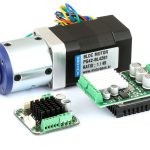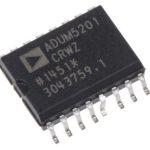
Real-Time Operating System (RTOS)
An RTOS is an operating system designed to operate in real-time applications. It processes data as it comes in without exhibiting buffer delays. Traditional OS offers non-deterministic, soft-real time responses while RTOS delivers deterministic, hard real-time response to events. This means that in practice, RTOS delivers highly responsive processing for a limited number of anticipated tasks faster than a traditional OS making it is ideal for IoT applications. There are several popular open-source RTOS for IoT, they include;
- RIOT
- mipOS
- Zephyr
- RT-Thread
- Raspbian
- FreeRTOS
- Nano-RK
- Apache Mynewt
- Lepton
- ARM mbed OS
- Nano-RK
- DuinOS
- uOS
- Nucleus RTOS
- QNX
- Neutrino
- VxWorks
- PikeOS
- Microsoft Azure (ThreadX)
- Nucleus RTOS
- TI RTOS
- RTX
- SafeRTOS (Commerical FreeRTOS)
- SCIOPTA
- REX OS
So, how do you pick the ideal RTOS for your IoT application?
Factors to consider when choosing an RTOS
Performance
Consider the memory and processing footprint requirements of your application. Assess your ROM, RAM, and flash to establish your memory needs. Also, assess interrupt latency and context switch times to establishing your processing needs.
Scalability
Previously, 8-bit and 16-bit MCU were popular choices for IoT devices. In the recent past 32-bit, MCUs have become increasingly popular resulting in manufacturers using two different powered in IoT devices. Make sure the MCU you pick is scalable so that you can adapt to any future MCU upgrades.
Graphical User interface (GUI)
What kind of graphics libraries does your IoT device require? Do you require something more advanced like 3D rendering or multi-layer interfaces? GUI requirements have a huge impact on your choice of RTOS for your IoT application.
Connectivity
Different RTOS require different communication protocols to provide connectivity to embedded devices. They include Bluetooth, ethernet, Wi-Fi, and Zigbee among others. RTOS enables you to pick specific communication stacks that you need for connectivity hence you will only use what you need.
Modularity
Many IoT applications have low RAM hence the RTOS comes with a core kernel with customized middleware and protocol stacks. You can control the device’s memory requirements by building what you need around the core kernel. This is hard to achieve with a traditional OS.
Security
Different RTOs offer different ranges of security add-ons for instance secure boot, encryption drivers, and SSL support. Ensure that the RTOS you pick for your IoT device meets your system requirements.
Ecosystem
The ecosystem of the RTOS is critical for example, does the RTOS provider offer support for other architectures and processors? Does it have an active community of developers sharing code and information on various platforms like GitHub? How many users does the RTOS have? More users point to the software’s efficacy.
Conclusion
There are numerous RTOS available at the moment. Some are open source while some are commercial. They are come with different features making it a daunting task to pick an ideal one for a specific IoT application. You could subject the various options to a Kepner-Tregoe (KT) matrix and pick that best works with your IoT device.




















